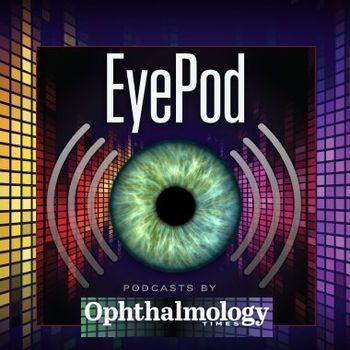
Device may help with earlier diagnosis of glaucoma
Chicago—The GDx-variable corneal compensator (VCC, Carl Zeiss Meditec), a commercial device that is currently in its fifth generation, may help with early diagnosis of glaucoma by identifying a thinning retinal nerve fiber layer, according to David S. Greenfield, MD, who described the basics of the technology at the American Academy of Ophthalmology annual meeting.
He explained that the instrument measures birefringence shifts in the eye using a plane of polarized light. When passing through other linearly birefringent tissue, the polarized light undergoes a phase shift that is referred to optically as retardation. Retardation in turn is correlated with retinal nerve fiber layer thickness. Dr. Greenfield is associate professor of ophthalmology, Bascom Palmer Eye Institute, University of Miami School of Medicine, Miami.
Measurements obtained with this instrument are compared with a normative database of more than 500 eyes for objective analysis. The instrument also has eye-specific corrections for corneal polarization axis and magnitude. This is important because it compensates for unique differences in corneal polarization axis and magnitude, Dr. Greenfield explained.
Earlier glaucoma diagnosis
"Uncovering, in a very objective and reliable fashion, the early diagnosis of glaucoma is one of the more important applications of this technology," he emphasized.
He demonstrated an optic nerve in which there was substantial thinning of the neural rim and enlargement of the cup; however, the standard visual field remained totally normal. Selective visual function testing showed a defect and the GDx-VCC and optical coherence tomography (OCT) showed substantial atrophy of the peripapillary nerve fiber layer.
"We are taught that in glaucomatous eyes structure and function should agree with one another, yet often in eyes with localized visual field defects we see abnormalities in the apparently normal portion of the visual hemifield. This is seen both with the GDx and OCT. This suggests that structural change may precede functional change detected using standard visual field testing," he emphasized.
A select number of case reports, he noted, suggest that the GDx can detect progressive glaucoma. These include patients with ischemic and traumatic optic neuropathy as well as glaucoma. More work is needed to study the ability of all imaging instruments to detect glaucoma progression, Dr. Greenfield pointed out.
"There are preliminary data to suggest that the GDx-VCC can predict the development of glaucoma in those suspected of having glaucoma. Investigators from the University of California, San Diego, showed that eyes without increased IOP, reduced central corneal thickness, and thinner retinal nerve fiber measurements measured with the GDx-VCC are at increased risk," he emphasized.
"Atypical images exist in a subset of older, myopic patients and are characterized by alternating bands of high and low retardance. The prevalence is unknown but is estimated to be approximately 10%. Caution is recommended when interpreting such images," Dr. Greenfield said.
Newsletter
Don’t miss out—get Ophthalmology Times updates on the latest clinical advancements and expert interviews, straight to your inbox.













































